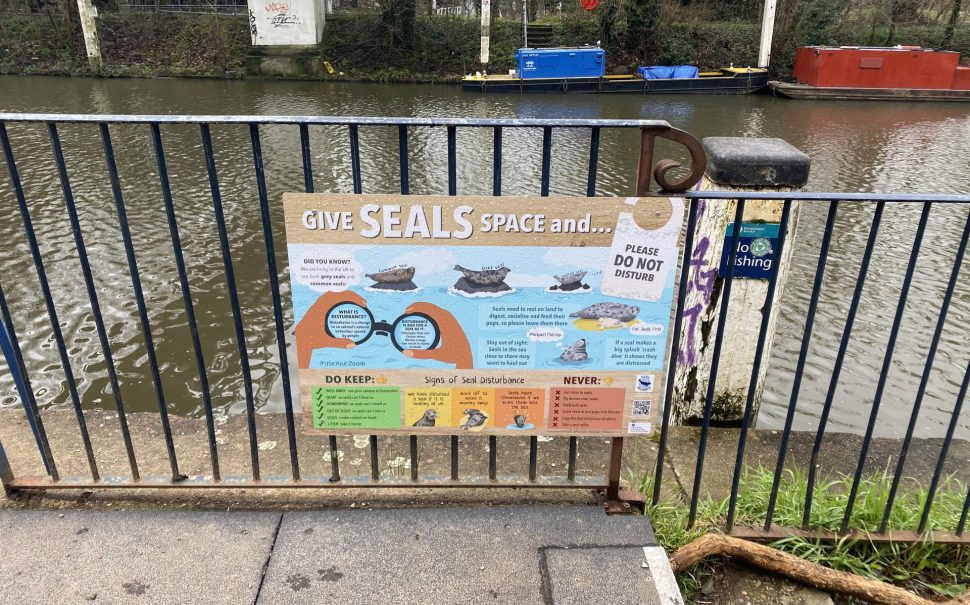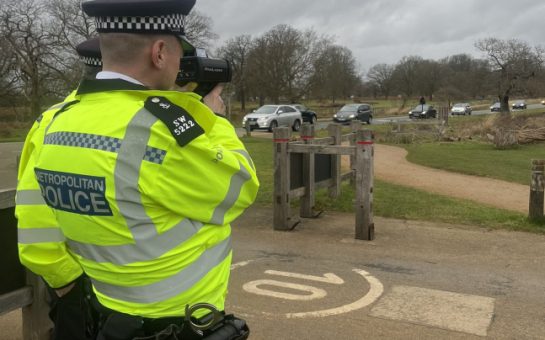Several seal information signs have been placed across south west London along the banks of the Thames to spread awareness of the dangers when approaching the animals.
The Thames Seal Watch, a regional subsidiary of the national conservation group, Seal Alliance, has erected the signs in areas where the marine mammals have been sighted and therefore are at risk of disturbance by the general public.
The Thames’ seal population has risen in recent years due to ongoing efforts to improve the river’s water quality, with a now estimated 2866 grey seals and 797 harbour seals calling the river home.
Unfortunately, instances of seal disturbance are also on the rise, as head of the Thames Seal Watch, Mary Tester, 40, explained: “We have seen a huge increase in disturbance events in the past few years.
“Londoners can really help make a difference, not only by knowing more about what to do when sighting a seal but also to take that information with them when visiting other locations.”
The Thames Seal Alliance, in collaboration with local councils, have erected signs on the Richmond Riverside and in areas of low tide in Teddington, Barnes and Chiswick.
Tester, a former veterinary nurse and wildlife photographer, founded The Thames Seal Alliance following the death of beloved London seal ‘Freddy Mercury’ during the pandemic, after the animal sustained injuries in a dog attack.
She was one of the first on the scene with experience in exotic animals and assisted in Freddy’s rescue.
“I saw what Freddy’s death did to the community. There was so much anger and I knew there were ways of making it better”, Tester said.
A sign is planned for display on Hammersmith bridge, where Freddy the seal first caught the attention of residents for his playful antics.
Tester explained that the signs represent a first step in educating south west Londoners of how best to live alongside seals, with school and rowing club visits also planned.
The signs warn the community of the dangers in upsetting the seals when they are ‘hauled out’, a term that describes when the mammals come to land to sleep, to give birth, to moult or to digest their food.
Disturbing the creatures by repeatedly getting too close causes them to deplete their fat stores, making them weaker over time and more susceptible to disease.
It also interrupts seals’ pupping seasons, vital in maintaining a thriving population level.
Tester advised that “the key thing is to stay as far away as possible”.
“If they can see you, if they can smell you, if they can hear you, your too close,” she said.
Seals also can pose some risk to people when frightened, with bites almost guaranteeing a hospital visit due to the zoonotic parasites they harbour in their mouths.
Tester and her organisation, with the support of MP Tracey Crouch, are currently engaged in securing legislative protections for seals in the UK, as is already the case in US.
The ‘Seal Protection Bill’ would make reckless or intentional disturbance by a human illegal across the country.
“Watching seals is wonderful – as long as people are doing it responsibly and doing what they need to do to help those seals live a long and healthy life”, Tester said.
If you would like to learn more about the Thames Seal Alliance, you can visit their website here.





